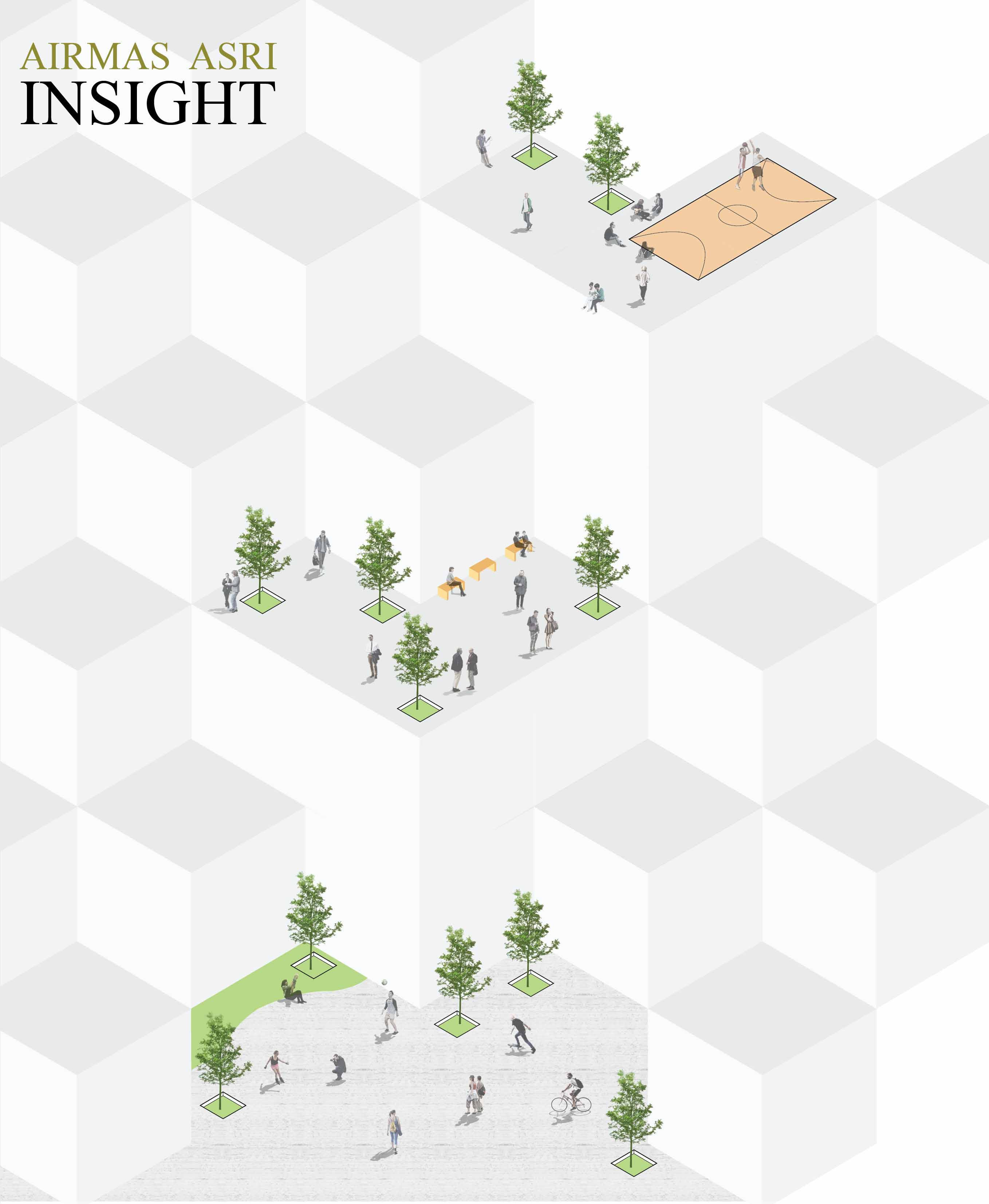2016-03-05
news
Airmas Asri Insight 03
Dictionary suggests that the term ‘interactive’ pertains to reciprocity.
Interactive space, then, is a space where reciprocity might take place.
However, both in architecture and urban design, there is another
concept which is more popular. It is called public space. If we are to
refer to Jurgen Habermas’ notion of public sphere, we may say that
public space is related to democracy, albeit in its ideal condition. It is
where individuals may gather, dialogues may occur and opinions may
arise.
One may want to differentiate interactive space from public space.
Indeed, there seems to be a difference between interactive space in
general sense and public space in a rather Habermasian sort of sense.
Note that Habermas’ notion of public sphere is related to the desire
of individual citizens to be free of any form of coercion and hierarchy.
Whereas, interactive space, in its general sense, may not be completely
free from coercion and hierarchy. It really depends on various contexts
within which the interactive space is situated. However, both interactive
space and public space share the idea of reciprocity.
This notion of reciprocity is the focus of this third edition of Airmas Asri
Insight. Some of Airmas Asri’s projects necessitate the firm’s architects
to conceive interactive spaces. In this edition, we are to explore some
of Airmas Asri’s interactive spaces.
M. NANDA WIDYARTA - editor in chief
Interactive space, then, is a space where reciprocity might take place.
However, both in architecture and urban design, there is another
concept which is more popular. It is called public space. If we are to
refer to Jurgen Habermas’ notion of public sphere, we may say that
public space is related to democracy, albeit in its ideal condition. It is
where individuals may gather, dialogues may occur and opinions may
arise.
One may want to differentiate interactive space from public space.
Indeed, there seems to be a difference between interactive space in
general sense and public space in a rather Habermasian sort of sense.
Note that Habermas’ notion of public sphere is related to the desire
of individual citizens to be free of any form of coercion and hierarchy.
Whereas, interactive space, in its general sense, may not be completely
free from coercion and hierarchy. It really depends on various contexts
within which the interactive space is situated. However, both interactive
space and public space share the idea of reciprocity.
This notion of reciprocity is the focus of this third edition of Airmas Asri
Insight. Some of Airmas Asri’s projects necessitate the firm’s architects
to conceive interactive spaces. In this edition, we are to explore some
of Airmas Asri’s interactive spaces.
M. NANDA WIDYARTA - editor in chief
